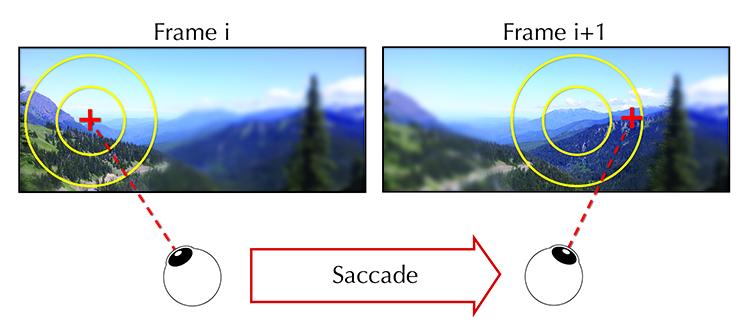Latency Requirements for Foveated Rendering in Virtual Reality

Foveated rendering is a performance optimization based on the well-known degradation of peripheral visual acuity. It reduces computational costs by showing a high-quality image in the user’s central (foveal) vision and a lower quality image in the periphery. Foveated rendering is a promising optimization for Virtual Reality (VR) graphics, and generally requires accurate and low-latency eye tracking to ensure correctness even when a user makes large, fast eye movements such as saccades. However, due to the phenomenon of saccadic omission, it is possible that these requirements may be relaxed. In this article, we explore the effect of latency for foveated rendering in VR applications. We evaluated the detectability of visual artifacts for three techniques capable of generating foveated images and for three different radii of the high-quality foveal region. Our results show that larger foveal regions allow for more aggressive foveation, but this effect is more pronounced for temporally stable foveation techniques. Added eye tracking latency of 80--150ms causes a significant reduction in acceptable amount of foveation, but a similar decrease in acceptable foveation was not found for shorter eye-tracking latencies of 20--40ms, suggesting that a total system latency of 50--70ms could be tolerated.
Publication Date
Research Area
Uploaded Files
Copyright
Copyright by the Association for Computing Machinery, Inc. Permission to make digital or hard copies of part or all of this work for personal or classroom use is granted without fee provided that copies are not made or distributed for profit or commercial advantage and that copies bear this notice and the full citation on the first page. Copyrights for components of this work owned by others than ACM must be honored. Abstracting with credit is permitted. To copy otherwise, to republish, to post on servers, or to redistribute to lists, requires prior specific permission and/or a fee. Request permissions from Publications Dept, ACM Inc., fax +1 (212) 869-0481, or permissions@acm.org. The definitive version of this paper can be found at ACM's Digital Library http://www.acm.org/dl/.
